I’ve written bits and pieces of the UK trip, but it’s grown into a monster I cannot tame nor have the time right now. Instead, I have decided to break it up into tiny chunks and publish them whenever I feel like it.
Edinburgh is an Escher hallucination. It unfolds in layers, with soot-covered gothic buildings, an imposing castle standing a stern watch, and tiny alleys to hidden courtyards. It was atmospheric, grand, and gloomy. It stuck with me the most during our fortnight of wandering in the UK.
This out-of-body experience is what I seek in travel. A sense of being swept into new lands and strange adventures, like when I read The Count of Monte Cristo or Treasure Island as a kid.
It was once frequent but has become rarer over the years. Possible reasons:
Perhaps my tolerance levels have increased, and I need higher highs from travel (like a junkie).
I am becoming a sourpuss old man who needs his bed, coffee a certain way, and a morning run to feel satisfied. Maybe I don’t enjoy the jackhammer that the travel brings to my routine.
Or is the world running out of awe for me? Once you’ve been to enough high streets, mountains, rivers, marketplaces, oceans, and museums, you tend to start seeing more of the same.
Maybe it’s too easy now. It’s become well-organized and too shrink-wrapped.
Whatever the reasons, Edinburgh was able to cut through this fog. Made me notice.
First impressions
My first impression of Edinburgh didn’t scream magic.
Emerging from Waverly Station, N and I saw:
A cold, grey day (duh!).
A large, brightly lit (mildly garish) beseechment to inebriation called Brewhemia right across the street.
(Ref: “English and Scottish people have topped an international league table of how often people get so drunk…” )
I promptly opened Google Maps and did the mandatory 30-second pirouette of ‘which way are we facing now’ before realizing that our path to the hotel involved a fifth direction. Up. I realized that the city involved levels! This simple fact immediately made it about five times more interesting.
The stairs even had a name: The Scotsman Steps. Ooh!
Stairway to…something
“It seemed to him a very Edinburgh thing. Welcoming, but not very.”
― Ian Rankin, Exit Music
The 104-step gateway between New Town and Old Town is a closed stairwell beneath the Scotsman Hotel.
It looked deceptively grand at the entrance, but the moment we entered, we felt a particular kind of griminess about it. Dirty, stained walls filled with graffiti welcomed us, and the marble floors were scuffed and soot-stained. The Scotsman Steps had seen grander times. Later, I learned that it was built at the turn of the twentieth century, fell into disuse and vandalism, and was subsequently repaired and redesigned.
Thirty steps in, a whiff of urine hit us. At the midway point, we passed a homeless nest: a bedsheet, a half-eaten pack of crisps, and a tattered pillow. The homeowner wasn’t around. As we hit the fourth landing or so at step 70 (then unaware that it was a finite 104-step stairwell), I wondered if this was Edinburgh’s version of a sorting hat, which only allowed the deserving to emerge with the undeserving permanently stuck in this stairwell purgatory for eternity.
This (completely rational) fear turned out to be misplaced, though, as we soon emerged into light.
Emerging from the subterranean
It was like we’d walked through platform 9 3/4.
It could have been partly relief that we could see light again and the air wasn’t so redolent of human emanations, but also, like magic, the sun had broken through the dark grey skies. Everything was painted golden and grand, and goth-black edifices towered all around. People bustled in the flagstone streets. It was as if we’d risen from the subterranean grunge into the place where the uppers lived.
If the platform 93/4 reference made you imagine Hogwarts, erase that from your brain. Step into the realms of GRRM. Think Winterfell with a pinch of King’s Landing’s bustle.
Cathedrals, spires, and medieval buildings seamlessly stood next to cafes, pubs, museums, and ice cream shops. On the horizon, a castle loomed, perched on more black volcanic rock that seemed to drop precipitously. The roads seemed to flow in all three dimensions, above and below us. Massive stone archways propped up bridges for the levels above, where there were more people, buildings, shops, and life.
The atmosphere superseded any annoyance I felt dragging a rolling suitcase through streets steadfastly designed for large horse carriages.
This wasn’t one of those curated Disney-esque medieval towns you see across Europe that people describe with words like quaint. Nope, this was proper. You need words like imposing and haunting. Gloomy wouldn’t be out of place either.
Between stone archways, disused old lanes stretched into ominous darkness, smelling of wet and sometimes rot. Moss hung onto stone edifices, letting us know that this place is cold and damp. Everything was soot-covered, and so Adams-family-black buildings towered closely, pressing down, reminding you to squeeze and weave. Everything stretched up and down and around rolling hills, and there, if you peek from the right place, on the horizon was the glistening sea promising freedom (or threat).
I loved it.
The Royal Mile
“If London was an alien city, Edinburgh was another planet”
― Jess Walter, Beautiful Ruins
After some fantastic soup, chilli, and bread from a rather confidently named Union of Genius, we walked the Royal Mile the day we arrived.
The Royal Mile is a cobbled spine of history stretching from the heights of Edinburgh Castle down to Holyrood Palace. It is lined with centuries-old stone buildings, ghost tours, museums, tweed shops, gelateria, cafes, whisky bars, and everything in between. Standing up there, at the top near the castle, you can see the picturesque array of dark spires and ancient buildings as if it were a painting.

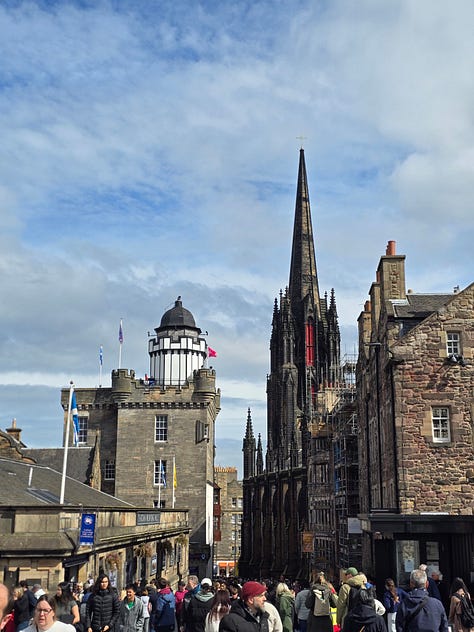
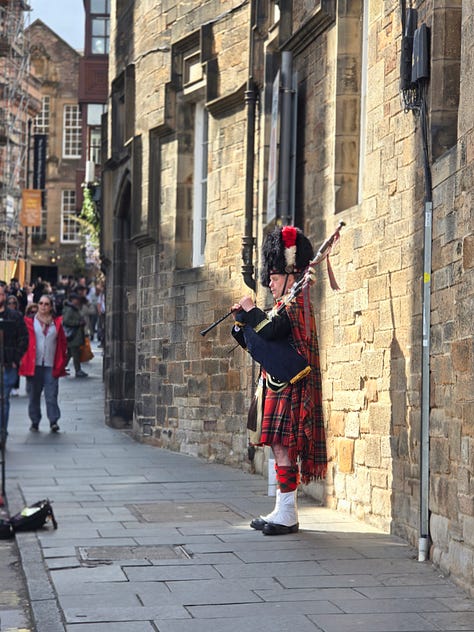


The crowds were jostling. The sun was out, and so was everyone. A kilted bagpiper wailed into the wind. A street performer juggled on a rope. Someone had placed a traffic cone on the top of what would have otherwise been an imposing statue of Adam Smith, the father of modern economics1. The air smelled of hops, coffee, gelato, and everything in between. It felt like a final celebration before the bugles of war sounded.
Tiny alleys opened up between tall buildings, like little secret passageways. Some are so narrow that you fit one at a time. Some seem dark and dank, and the walls to the side drip with something slick. These alleys (called a ‘Close’) led to courtyards big and small beyond.2
We walked into Lady Stair’s close and emerged into an expansive courtyard with a writer’s museum tucked in a corner, paying homage to famous Scottish writers: Robert Burns, Sir Walter Scott, and Robert Louis Stevenson. A quick browse.
We continued strolling down the Royal Mile, enjoying the vibe and stopping for the occasional gelato, until we got to the very bottom and then decided it was time to go up again.
Arthur’s Seat
Nothing makes N happier than walking or climbing things. Most of our travels involve a delicate negotiation between all the drinking, chilling, and vibe-soaking I want to do and strenuous ambulations that N wants to do. As part of this negotiation, we climbed Arthur’s Seat, a rolling hillside covered in a brilliant yellow carpet of Gorse flower shrubs.
It’s a straightforward climb with minimal huffing, and from up there the views were expansive and beautiful — the sea on one side and the old city stretching below us with the Castle and the Hub looming like fangs of a slumbering stone beast.
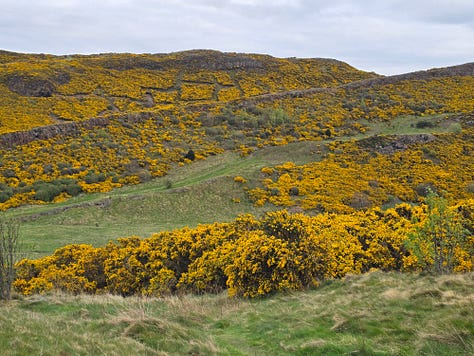


Now, when you climb something as specifically named as Arthur’s Seat, you’d want to know the story behind it. But you’d be out of luck because the facts are murky. The made up tourist version could be that it is named after King Arthur although this is most likely bullshit. What’s likely is that Arthur was a common enough name in the area that it got slapped on impressive landscapes. Anyway, we’ll never know.
After the physical exercise of mildly strolling in pleasant weather, it was time for my end of the negotiation. We went to a Whiskey bar, and after I awkwardly tried to finagle a complimentary tasting from the bartender and failed, I settled for his recommended scotch.
At 9 pounds a snifter, it raised my internal eyebrow. However, when N asked me “How is it?” with more than a hint of scepticism after a sip, I had to make up tasting notes like cinnamon and caramelized apple quickly to justify the price. I swore I could feel the highland breeze.
The Edinburgh Castle
When we went to the castle on Day 2, the vibe had turned. Asbestos sky. No sun. At the top of the castle hill, the cold, biting wind stung our eyes. We huddled deeper into our jackets. There was a mild, constant drizzle.
The castle looked darker and more imposing now. The jagged silhouette, which looked picturesque in the golden sun yesterday, now felt like the warning it was originally meant to be.
It was a warning that wasn’t heeded historically. The history of Edinburg castle is a history of constant upheaval. Cannons sit on the walls, once meant to maim, but now, an object for tourist selfies. The castle had, at different points in history, been a royal residence, a military stronghold, and even a prison. Now, it is one of the top things to see in Edinburgh with a souvenir shop.
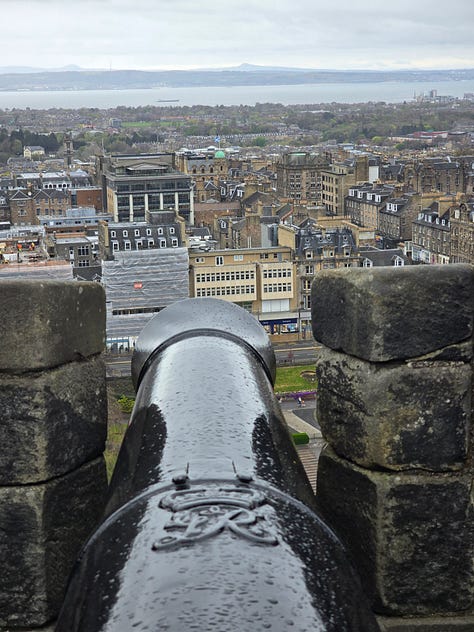

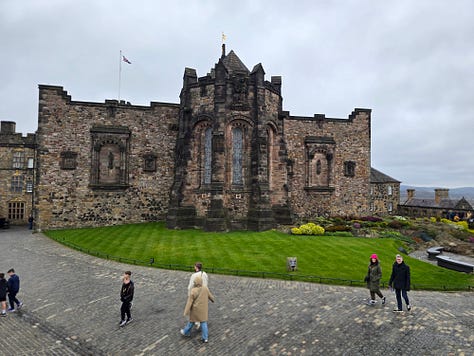
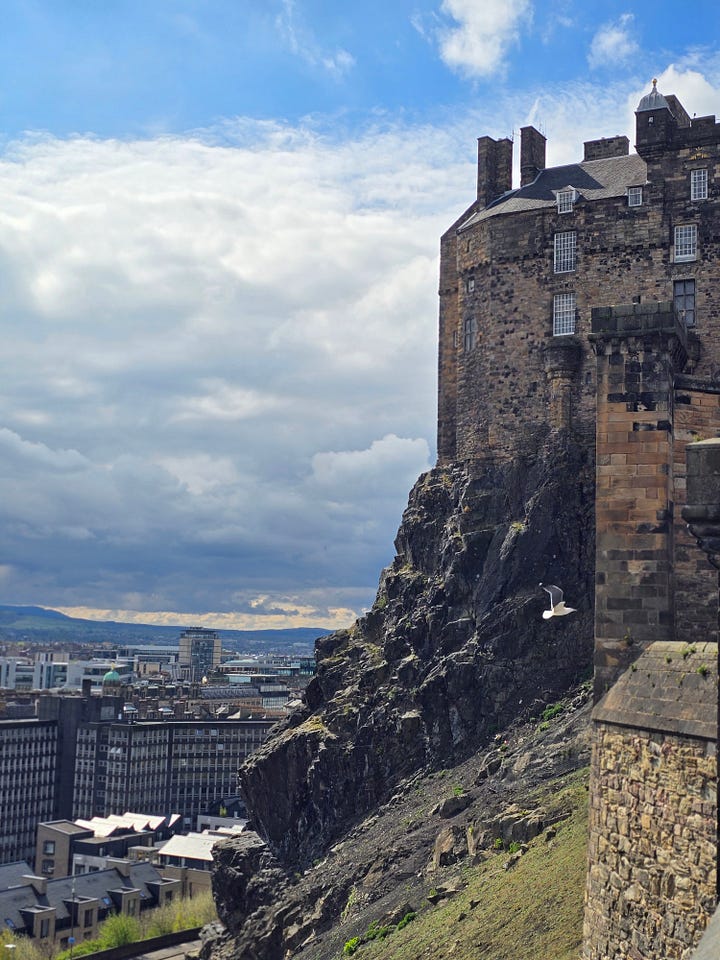
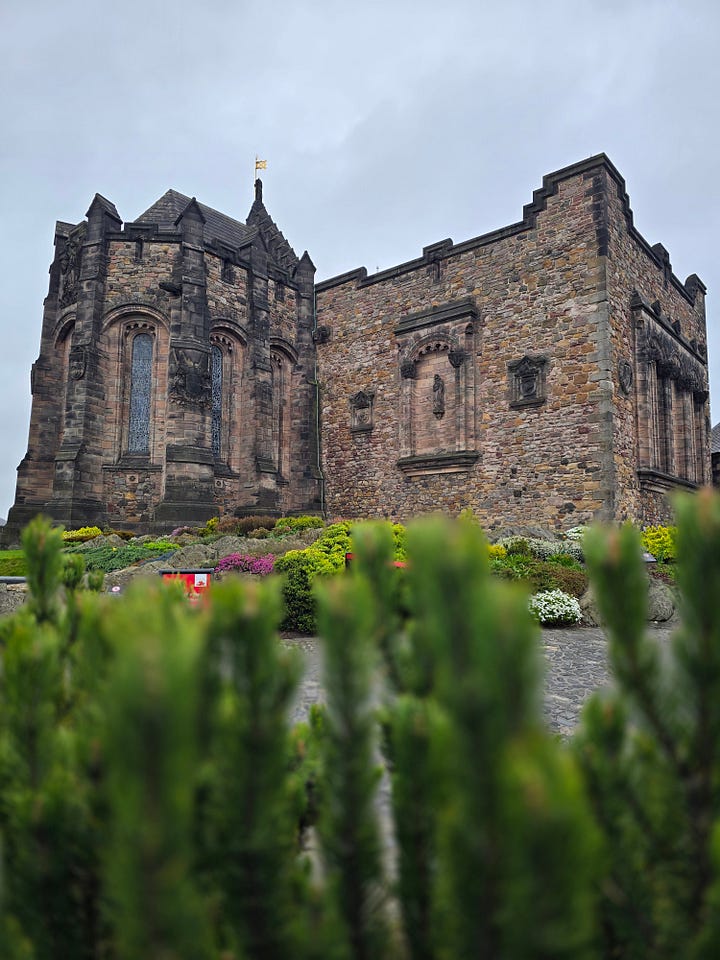
It’s a nice place to visit, with beautiful courtyards, a pretty chapel, and museums that extol the sacrifices of soldiers in wars the Empire fought across the world. In a glass case was Tipu Sultan’s helmet and swords, along with other curios pilfered from around the world.
Makes you wonder. One man’s sacrifice is another man’s plunder.
Living in times of easy access to hot cocoa
How must it have been in millennia past when there was no electricity or the comforts of modern existence? Mayhem was always imminent. An average city dweller wouldn’t have done very well, except huddle in the dark of the night and look up at the flickering torches shining from the rooms in the Castle. Must have been a haunting presence as rain continued slashing down.
For my twentieth-century body, softened by modern conveniences like electricity and soft beds, it sounded miserable and hard.
I contemplated all this with a luxurious chocolate drink in Knoop in the old town. My drink tasted rich, warm, and like a cup of heavenly manna to wade off the cold I felt in my bones coming from outside. Earlier, I had spent nearly ten minutes trying to choose among three dozen varieties of cocoa drinks with varying levels of darkness and sweetness.
What amazing gift it is to live in times like these.
Rainy day things
Since it continued to be a rainy, cold day, we decided to hop from one indoor thing to another, including eating Lunch at Dishoom, a much-hyped Indian restaurant. It was much easier to get tables in Edinburgh (than London), and it had a nice, cozy Irani cafe vibe and food that was pretty delicious (and spicy). N was happy with the unlimited chai refills, and I downed a cocktail or two.
When we emerged again, it was still drizzling, and so we headed to the Edinburgh Central Library, where we browsed, read, and spent time in the hush of books. I enjoyed the easy accessibility of libraries and bookstores throughout the UK trip. In the evening, when the rains stopped and the lights came on, the city glowed.
I’d love to visit Edinburgh again, but it’s unlikely I would feel this exact way. You see a place through the prism of a precise moment in time, and it dazzles you. But the prism morphs, and that exact moment is gone. You can revisit the same cobblestone streets, parks, and pubs, but you cannot recreate that exact feeling. It’s one and done, swept aboard the time express.
It sounds a bit tragic when, in fact, it’s the beauty of the whole thing.
Could be Worse,
Tyag
More Trip Reports
It seems to be a tradition at this point, fuelled by alcohol and a sense of mischief. I appreciate it 100%. People don’t need statues (neither do Gods if you ask me).
Edinburgh has 250 closes most in the old town.






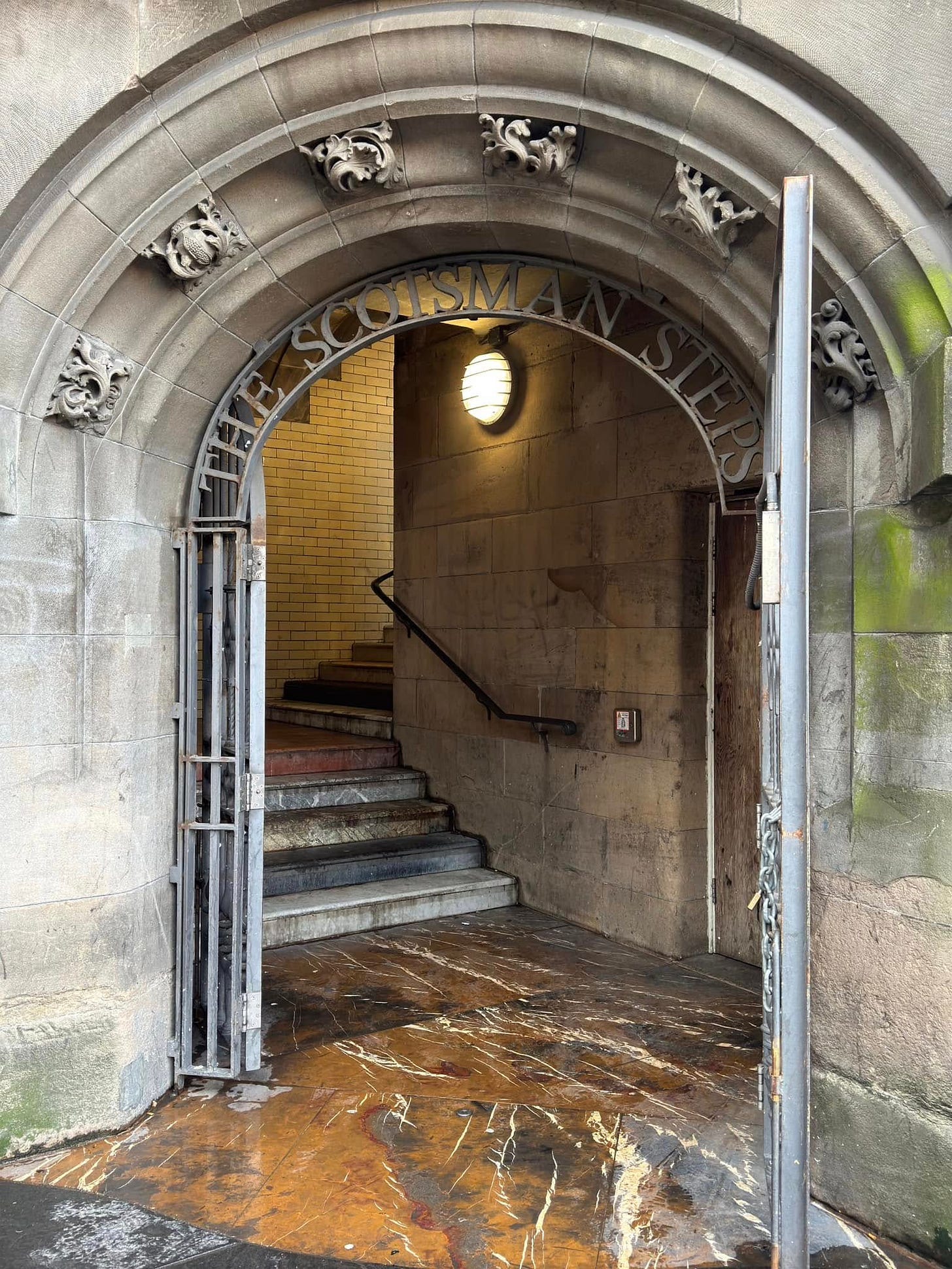

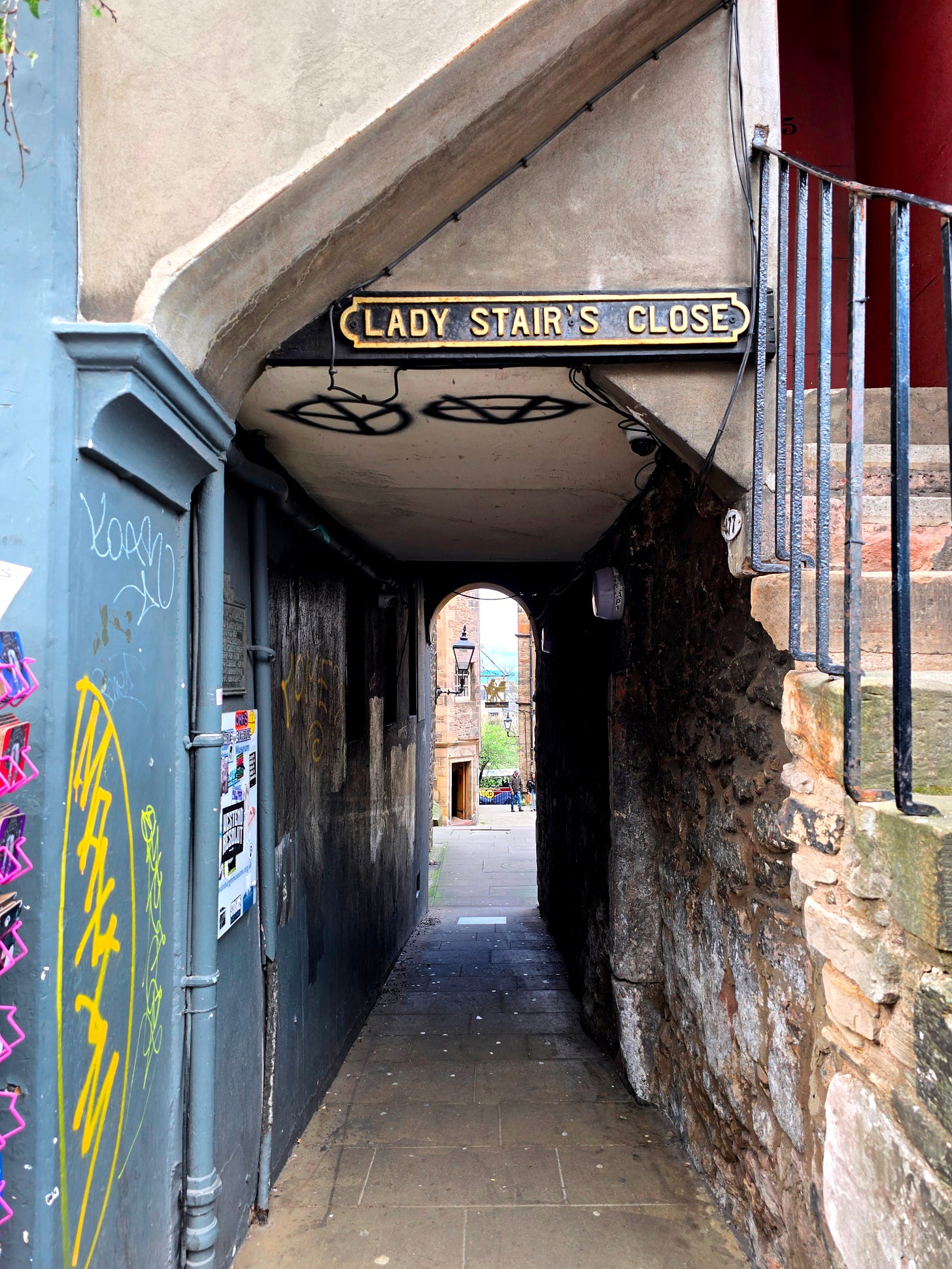
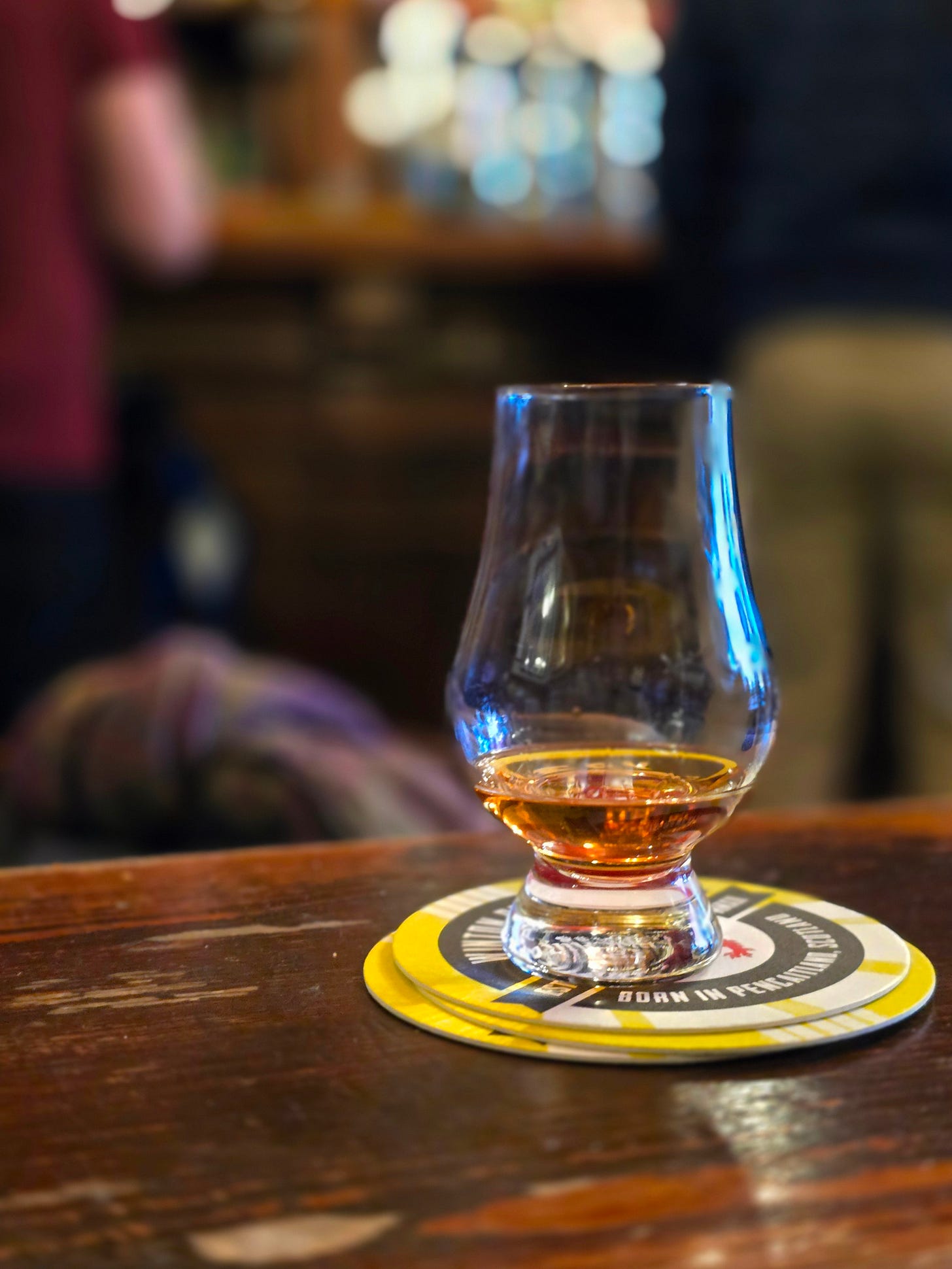


Love the whole essay, but especially the way you closed it (pun unintended - a happy accident). I look forward to other bits and pieces from this trip.